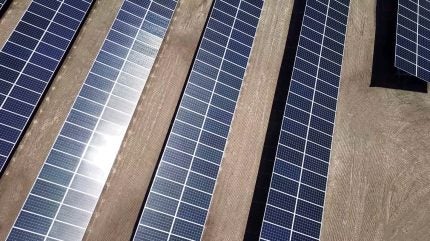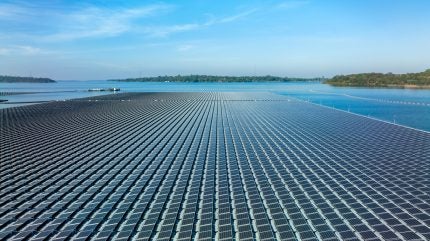The world’s largest solar farm, located in Xinjiang Province, China, has been connected to the grid. With a total capacity of 3.5 GW, the plant was constructed and managed by state-owned Power Construction Corporation of China.
Scope of the World’s largest solar farm
It is spread across 32,947 acres of land in a desert region near Urumqi, the capital of Xinjiang. The world’s solar farm will produce 6.09 billion kilowatt hours of electricity annually, sufficient to meet the energy needs of Papua New Guinea or Luxembourg for one year. China has also shifted focus to offshore solar projects most notably being the HG14 China’s first Gigawatt sized fixed-pile offshore solar project that became fully operational in December 2025.
Previous largest operational solar facilities
Both with a total capacity of 3 GW, the two largest operational solar facilities previously were also in western China – Longyuan Power Group’s Ningxia Tenggeli desert solar project and China Lüfa Qinghai New Energy’s Golmud Wutumeiren solar complex. Though sparsely populated, the Xinjiang region is rich in solar and wind resources. It has become a hub for massive renewable energy bases that send much of their power across long distances to China’s densely populated eastern seaboard. Solar projects such as these predominantly serve the high demand for electricity in China’s eastern regions. 35% of the world’s solar-grade polysilicon comes from Xinjiang, and the region is also a major source of nickel and lithium, both of which are needed for EV batteries.
Also Read: Construction commences on China’s largest offshore solar farm
China’s energy and emissions goals
This feat is part of China’s national strategy to increase its renewable energy production capacity in order to reduce its dependence on fossil fuels and cut carbon emissions. The Xinjiang solar farm project will not only boost China’s energy capacity, but also promote local economic development in Xinjiang. The region is often marked by social and political tensions. Infrastructure on this scale is also likely to stimulate innovation and employment in the region. What’s more, this achievement represents a significant step towards China’s goal of becoming carbon neutral by 2060.

Also Read: China starts the construction of the largest aircraft hangar in Asia
By investing massively in renewable energies, China is not only meeting its growing energy needs, but also playing a crucial role in global efforts to reduce carbon emissions. The project symbolizes the country’s commitment to a more sustainable future and could serve as a model for other nations seeking to develop their own renewable energy capacity.
Largest Offshore solar farm in China
Last month, state-owned China National Nuclear Corporation (CNNC) broke ground on the largest offshore solar farm in the country. The project is located at Haibin harbour in Lianyungang city, Jiangsu Province. It has a total capacity of 2 GW and has an estimated cost of US$ 1.39 billion. The facility is currently the largest layered sea-based solar farm in China, covering an approved sea area of 1,868 hectares.
Situated near the Tianwan nuclear power plant in Lianyungang, the project utilises the warm seawater area designated for the plant’s discharge, while the adjacent area is allocated for offshore PV construction. This design promotes the integrated use of marine resources.
The solar farm is part of the country’s efforts to increase clean and renewable energy generation to support the rapid economic development of its coastal provinces. It is expected to save 680,000 tonnes of standard coal and reduce carbon dioxide emissions by 1.77 million tonnes annually. Over its 25-year lifespan, the farm is projected to produce an average of 2.234 billion kilowatt hours of electricity annually. This is enough to power 230,000 homes.
World’s largest solar farm construction phases
The 2GW tidal flat PV project consists of offshore and onshore sections. The offshore part includes solar power generation systems, with electricity transmitted to an onshore substation through an overhead corridor bridge. After voltage adjustment, the power is integrated into the state grid. The onshore energy storage component is nearing completion and will be operational by the end of June 2024. The connection of the project to the state grid is scheduled for September 2024, with full capacity online by 2025.

Also Read: Exploring the Biggest Solar Energy Facilities in U.S. for 2024
“The project serves as an important demonstration for offshore solar power generation. The project’s key advantage lies in its proximity to the market where electricity demand is significant. Given that the southeastern coastal areas are among China’s fastest-developing regions with high electricity demand, the potential for offshore solar farms remains substantial,” said Xiamen University’s China Center for Energy Economics Research director Lin Boqiang.
